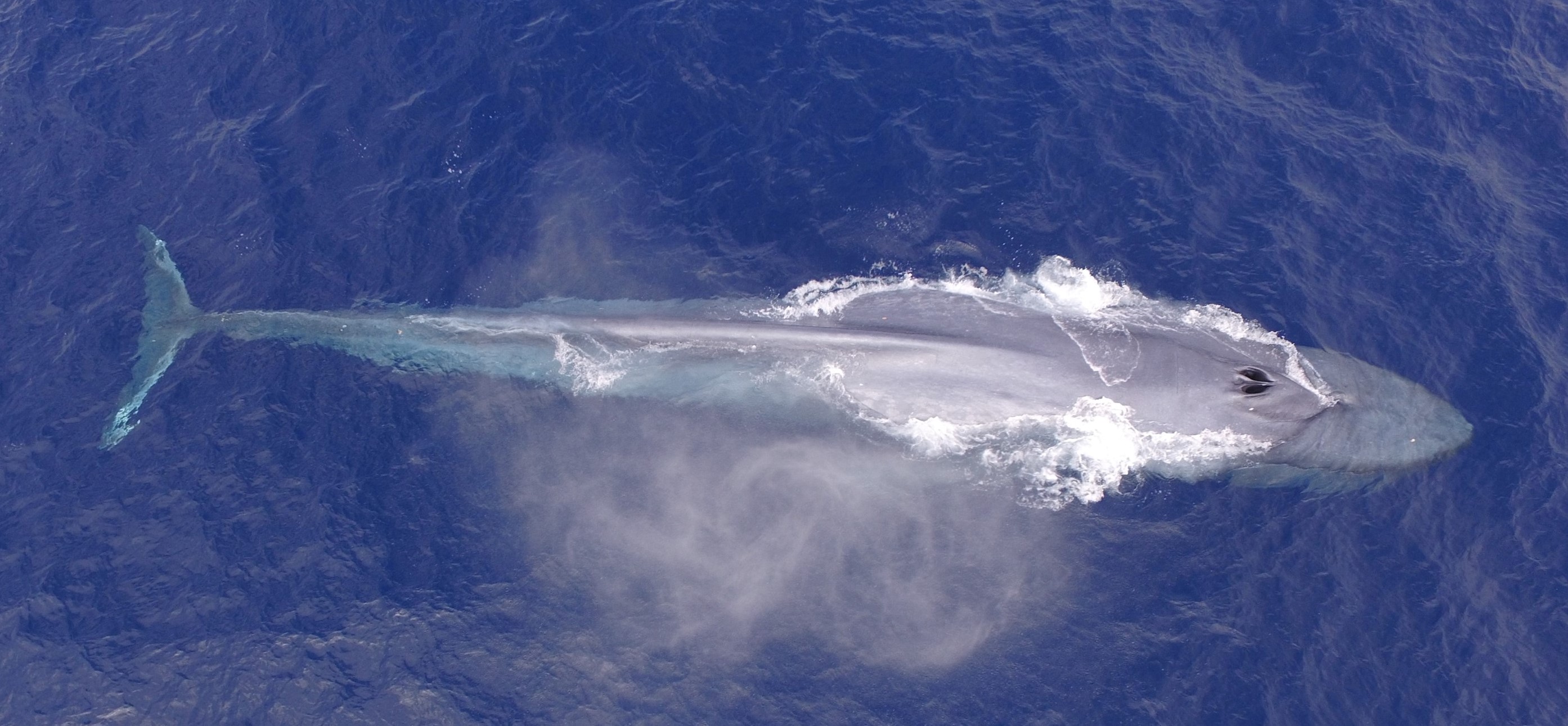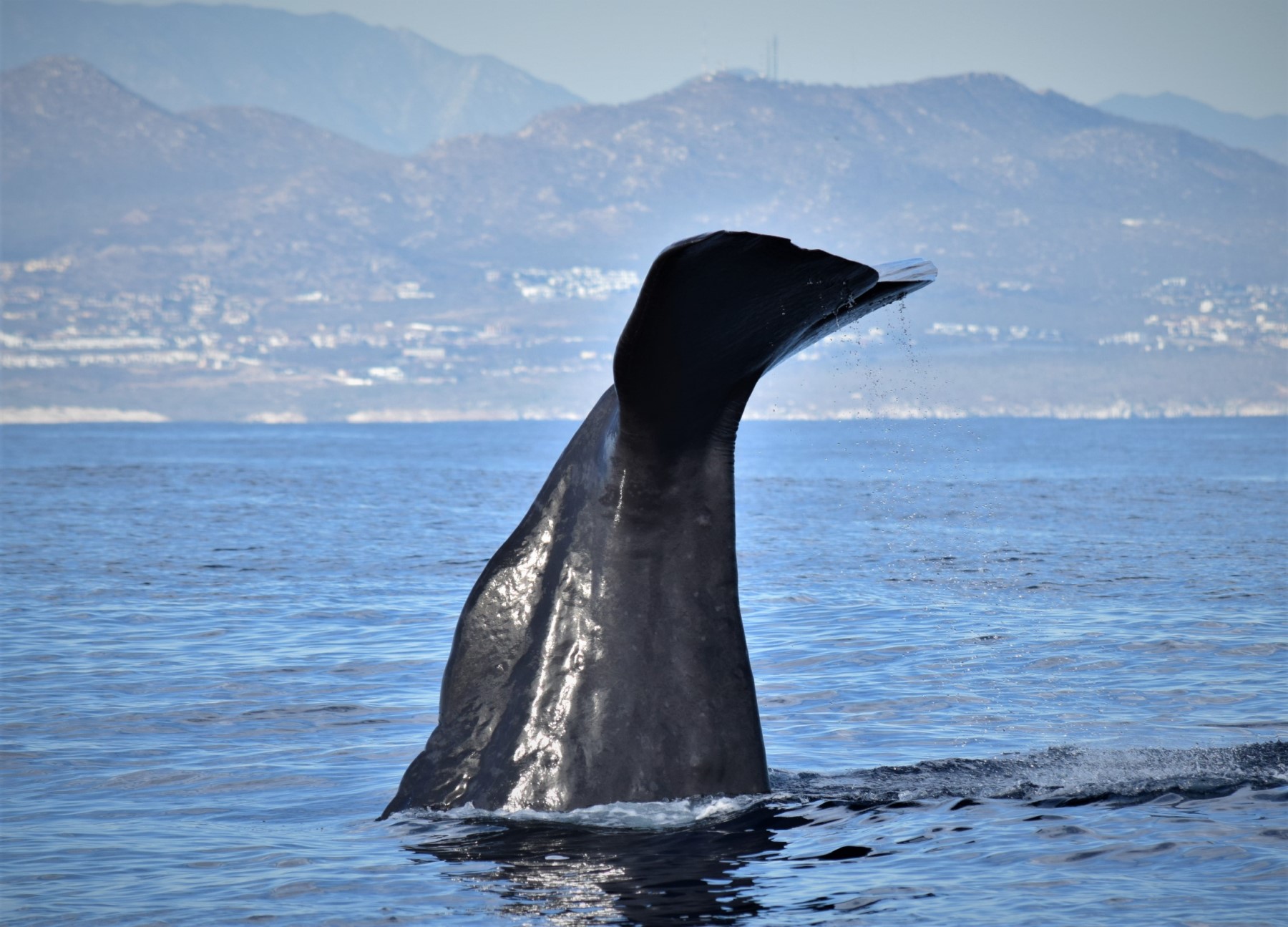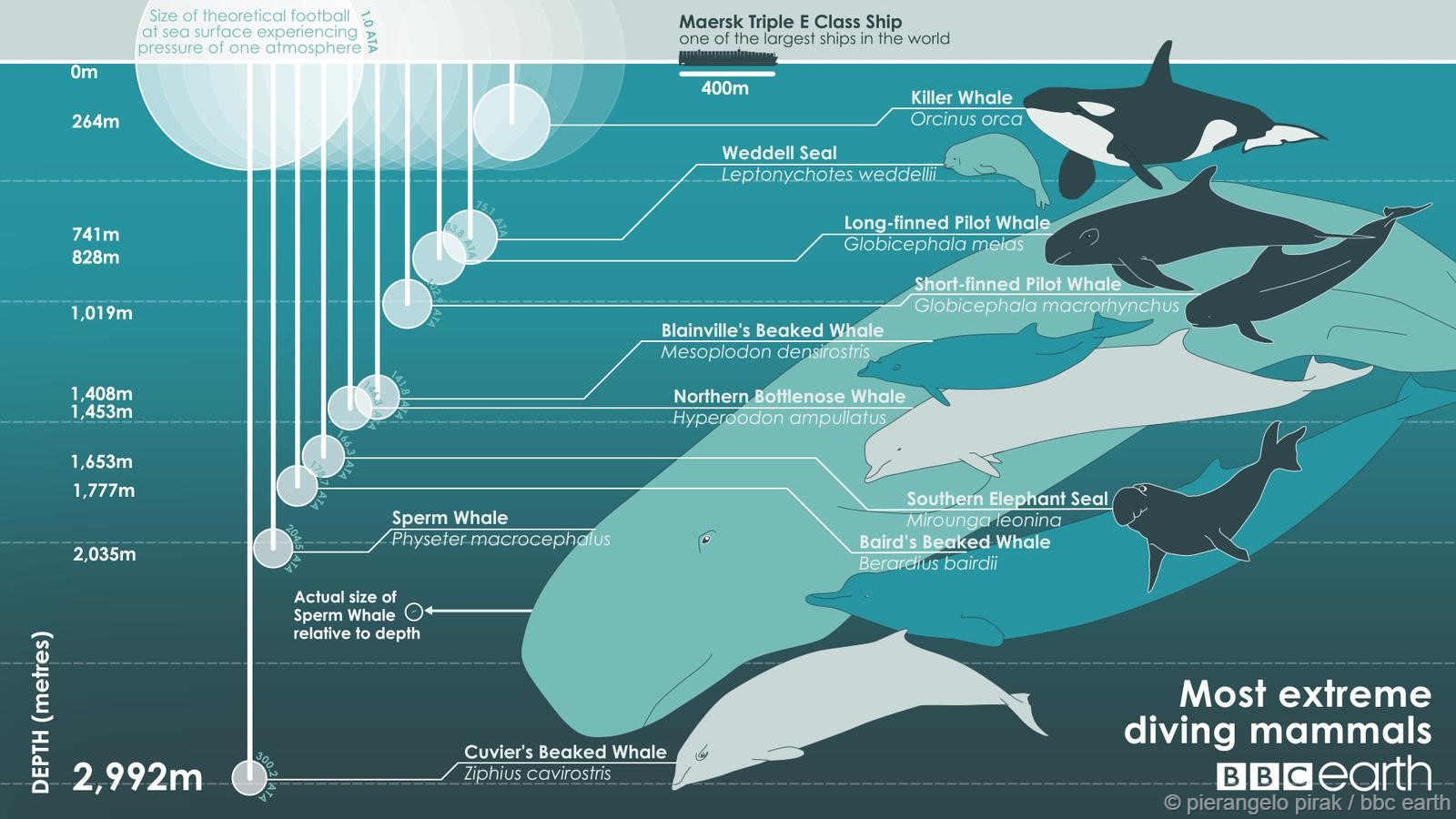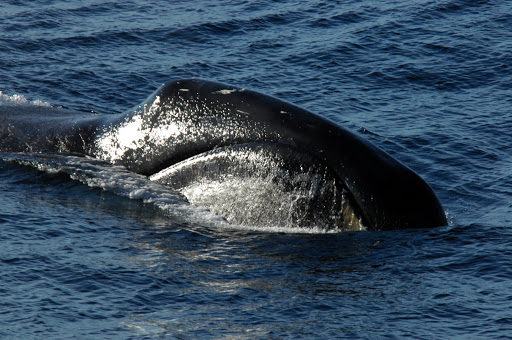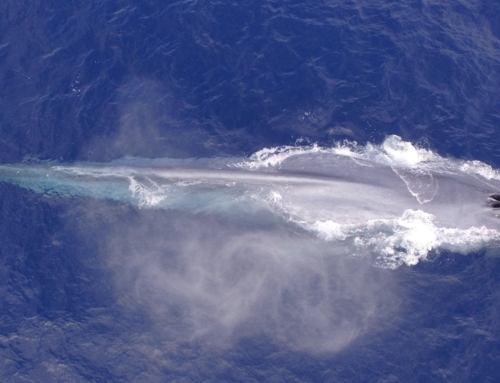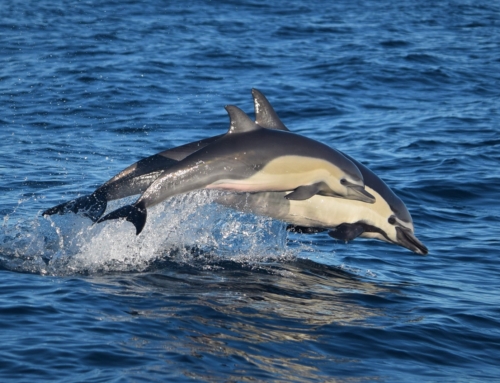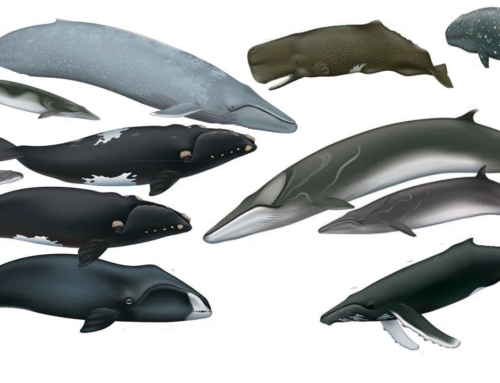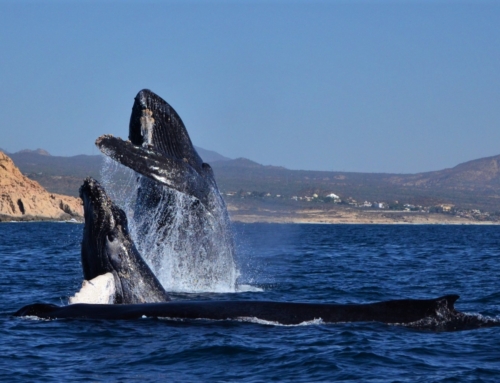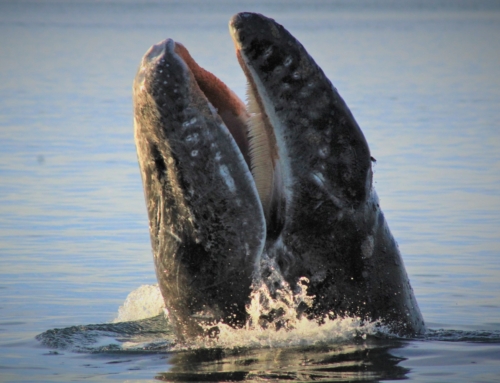Who dives the deepest? Which are the biggest and the smallest? Why does one live so long? Find out about record breaking Cetaceans and their amazing feats.
Cetaceans, a group that includes whales, dolphins and porpoises, are one of just two types of mammals that have evolved to become fully aquatic. The other group are Sirenians, the Sea cows and Dugongs. They typically inhabit warm, shallow coastal waters and rivers, rarely venturing into open seas. Being the only mammals to ever successfully adapt to life in the Big Blue has taken Cetaceans to the intersection of the boundaries between biology and environment. Surviving in a world whose rules and parameters are totally different to the one their ancestors evolved in pushed them down evolutionary paths that would take record breaking turns.
Unimaginable amounts of space, plentiful food and the threat of predators helped create giants the likes of which the planet has never seen before. The challenges of aquatic life and abundance of high quality nutrients pushed the evolution of brains and bodies into new territory. Their eventual expansion into ever deeper and colder reaches of the Ocean brought yet more records. They combine these adaptations with the other characteristics that have helped mammals come to dominate the earth, intelligence, social cooperation and warm blood, leaving them peerless in the largest habitat on the Earth.
How big is too big?
Probably the thing Cetaceans are most famous for is their preposterous size. It is widely known that that the largest of them all, the Blue whale, is the most gigantic animal on Earth – not to be confused with the most massive organism. That honor belongs to a Honey fungus known as A. Solidipes which covers an area of around 9.6 km2 (3.7 sq miles), and is somewhere between 2400 and 8650 years old! There is no way of knowing if there have been even larger fungi in the past, but we are fairly sure that in terms of animal size, the Blue whale is not just the current record holder but also the BOAT (biggest of all time). They can reach a length of 33m (100ft) and weigh over 165 tonnes (360 000lbs)! Some scientists hypothesize that they may even have reached physiological and environmental limits.
The drag created as they open and close their massive mouths to feed may be one factor limiting further growth. There are limits to how efficiently respiratory systems can provide sufficient oxygen to larger and larger bodies. Food availability, although high when it comes to their prey of choice – krill, also plays a role. Larger whales were of greater value to whalers, meaning Blue whales and especially the largest individuals were heavily targeted. This may have removed a lot of the ‘giant’ genes being passed down through generations. Changing conditions in the Ocean and other man made threats such as ship strikes also pose existential risks. In other words, the Blue whale is not only the largest animal Earth has ever seen, but also probably the largest it will see for a long time yet.
An animated video explaining Blue whale size
Brain meets brawn
Sperm whales have the largest brain on Earth. A wonder of evolution that has helped them develop some of the most complex societies and languages of any animal. This massive brain is also the control center for one of the most incredible bodies ever to take shape. Sperm whales hunt at extreme depths using a system of echo-location similar to sonar to locate their prey. We now know that they can locate a squid less than a foot long from over a mile away and schools of squid from even further. They can also produce sounds up to 230 decibels, enough to kill a human being, making them the loudest creatures in the world.
Sperm whales also hold the record for being the largest toothed predator alive today. Males, who are substantially larger than females, can reach over 20m (70ft) in length and weigh as much 80 tonnes (176 000lbs). This makes them the only creature in the Ocean capable of taking down the mythical Giant squid, which can grow to almost the same lengths as the whales! To hunt this kind of prey they also need to dive extremely deep. Until not too along ago, they were thought to to dive deeper than any other air breathing animal. That title now belongs to our next subject…
A Sperm whale tail
Going where no air-breather has gone before
There are only a handful of air breathing species on the planet that are known to dive down to depths of below 1500 m (5000 ft). They include the Sperm whale, the Elephant seal and a few species of Beaked whales. The most accomplished of these is Curvier’s beaked whale, diving down to a record breaking depth of 2992 m (9816 ft) and lasting two hours, seventeen and a half minutes! It is quite possible that some are able to make dives to below 3000 m (10 000 ft). This is substantially deeper than their nearest rivals the Sperm whale and Elephant seal, who both reach around 2200 m (6900 ft).
Very little is known about Beaked whales because of their preference for deep, open waters and the fact that they spend so much of their lives below the surface. Curvier’s beaked whale is the most widely distributed beaked whale species. They are also one of the species with the highest incidences of stranding on beaches. This is a puzzling fact when one considers the fact that they rarely venture close to coastlines. The upside is that these strandings have provided scientists with some of their only opportunities to study these elusive whales.
A comparison of deep diving mammals Image: BBC
Wise old whales
There are some organisms on this planet that live for a really, really long time. Certain trees and fungi can live thousands of years while certain bacteria can lay in a dormant state for millions! There are even jellyfish that are, essentially, immortal. When it comes to mammals and the vast majority of other creatures in the animal kingdom, life is much shorter. Most whales have lifespans comparable to us humans, meaning they live between 40-100 years. The Bowhead whale bucks that trend spectacularly.
The first clue about their record breaking age was harpoons dated to the 1880s that were found lodged in whales still alive today. That told us the whales we were seeing in the 21st century were over 200 years old. Scientists have now been able to determine that the maximum age for a Bowhead should be around 268 years! The source of their longevity remains a mystery, but in 2015, the Bowhead whale became the largest animal ever to have its genome sequenced. Researchers hope this will help them unlock genetic secrets about health and ageing that could even benefit humans.
Bowhead whale Image: WWF Canada

